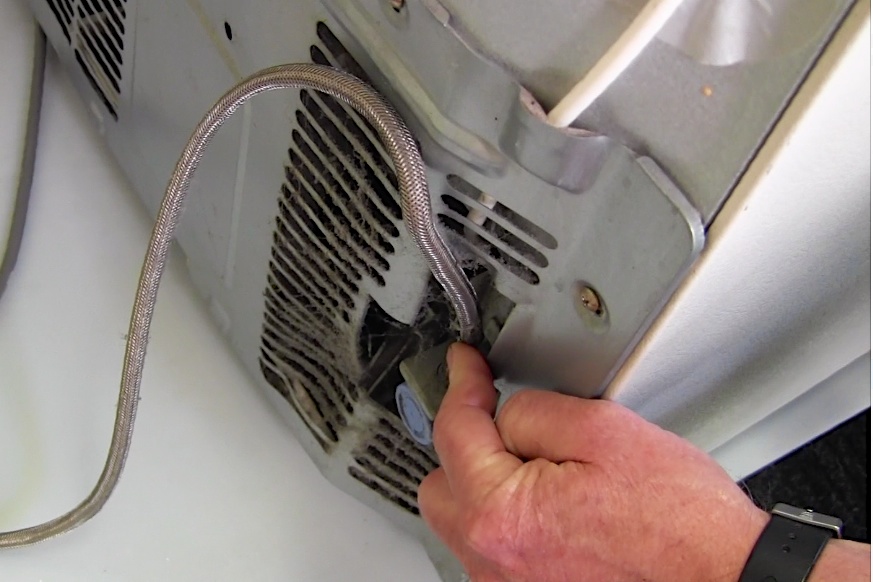
You may not realize it, but your refrigerator might be consuming far more energy than normal. Photo: American Ratings Corporation (2015)
Most people assume their refrigerators are working fine as long as they don’t notice any obvious problems, but few realize they’re paying far more than necessary to keep their food fresh. The reality is that an inefficient refrigerator can consume up to three times the amount of power used by a properly functioning unit, often without anyone noticing. That’s why it’s a good idea to periodically inspect your refrigerator and address any issues that may be causing energy loss.
The first thing you should check is the condenser coils, which, depending on your refrigerator’s design, will be located on the back or across the bottom front. When these coils are dirty or otherwise obstructed, it inhibits efficient operation and requires the unit to work harder to maintain the desired temperature. In addition to making sure there’s adequate room to facilitate proper air flow, you should clean your coils at least once a year.
Another common cause of energy loss is air leakage, which is why it’s a good idea to check your refrigerator’s door seals (gaskets) for functionality. Here’s a simple test: close your fridge door on a sheet of paper and try to pull it out—if it slides out with little resistance, your gasket likely needs to be replaced. You should also inspect your fridge and freezer doors to make sure they’re square in their frames and not missing any components that might cause an air breach.
Even if your refrigerator is running optimally, you can further promote efficient operation with smart practices like making sure the temperature settings are correctly calibrated. The optimal temperature range for a refrigerator is 37 to 40 degrees Fahrenheit (zero to 5 degrees Fahrenheit for a freezer), so avoid setting yours too far below this interval. It’s also good to keep your refrigerator reasonably full, which will help it retain its temperature. On the other hand, be careful not to overfill it, as this may impede proper air circulation. Additional measures include opening the door less often; waiting for hot foods to cool before placing them in the fridge; and situating your refrigerator away from heat sources like ovens, dishwashers and direct sunlight.
Of course, one reason for an excess in energy usage may be your refrigerator’s age. While the annual electrical consumption of a 20-year-old refrigerator hovers around 700 kilowatt hours (kWh), a modern, Energy Star certified unit cuts this down to about 400 kWh. Considering that refrigerators comprise up to one-sixth of a home’s total energy usage, it’s easy to see how replacing an old unit can substantially reduce your utility bills. An easy way to gauge how much you stand to save is with the ENERGY STAR Savings Calculator.
Find a Diamond Certified appliance repair company in your area.
